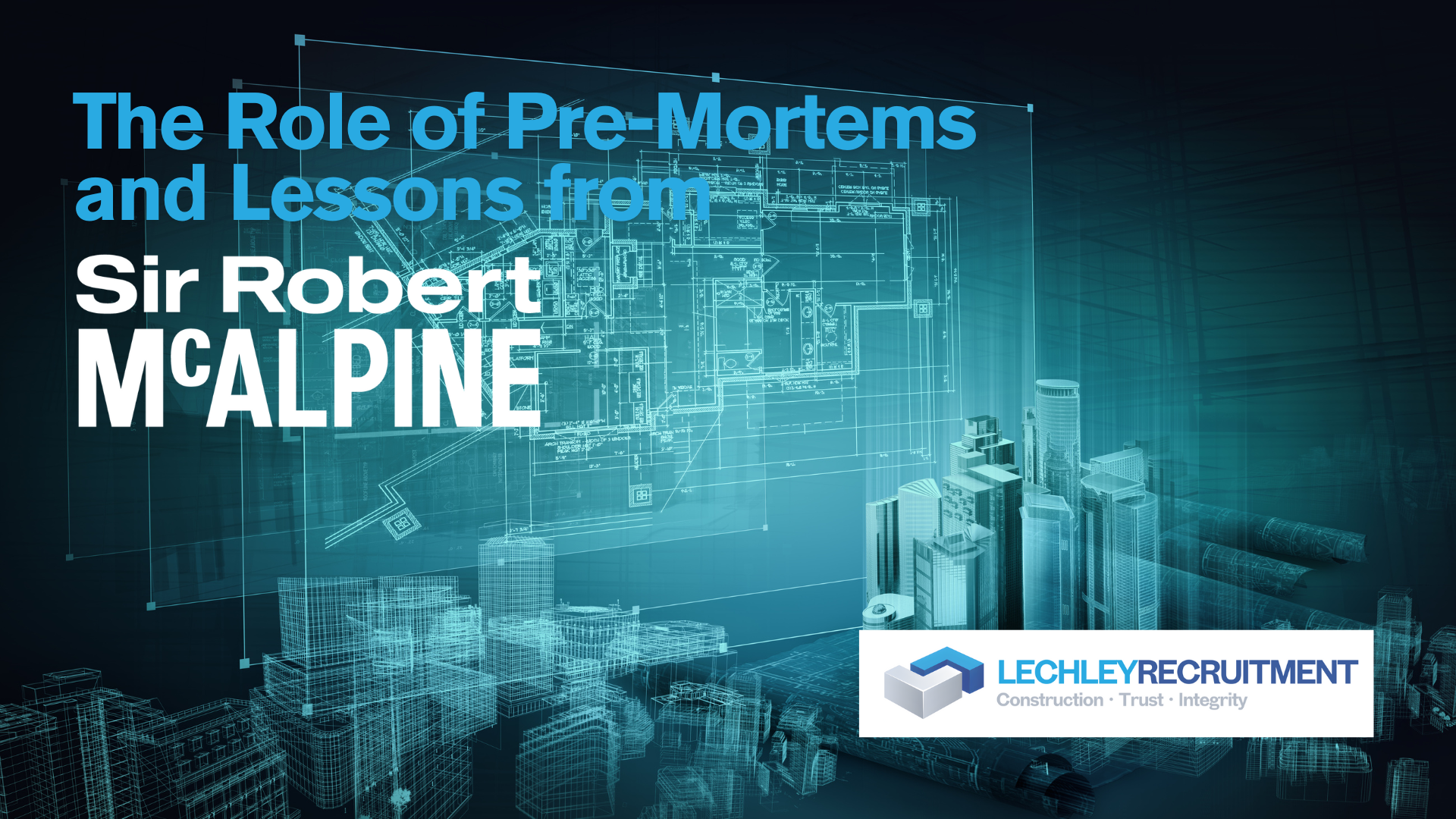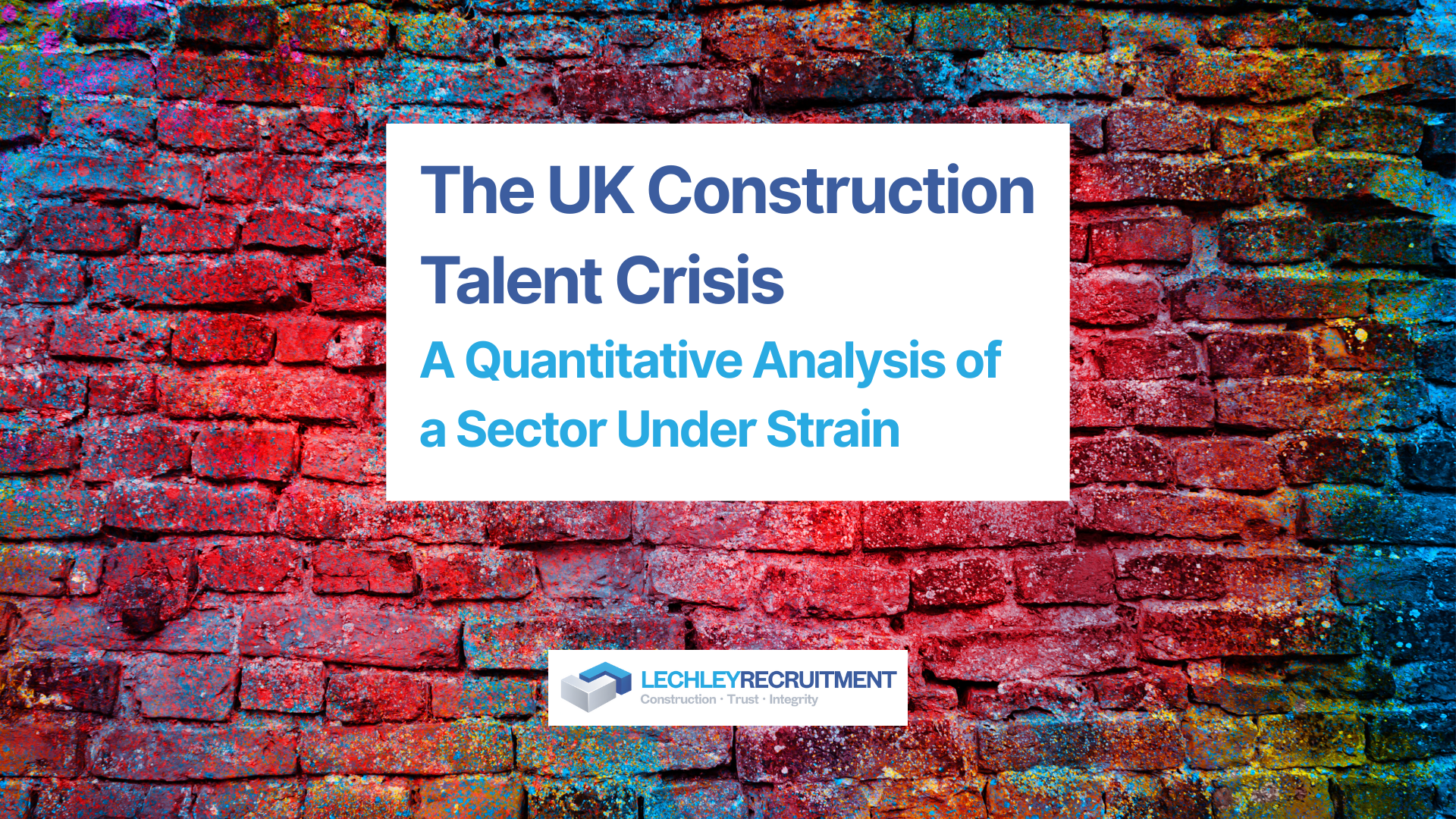Building Resilience: The Role of Pre-Mortems and Lessons from Sir Robert McAlpine
Building Resilience: The Role of Pre-Mortems and Lessons from Sir Robert McAlpine

Few things have shaped my approach to construction and life, like early mornings on site, late nights poring over plans, and the privilege of sharing heated debates around project tables. After more than two decades in the industry, as a Quantity Surveyor and now recruiting for leading construction teams, one lesson rings truer than ever: your real advantage isn’t just technical skill, but the willingness to challenge, adapt, and include every voice in shaping how things get built.
I learned this the hard way, from my first major job after university right through to running my own recruitment business. Back with Sir Robert McAlpine, there was no sidestepping the tough questions. If you hadn’t risked being the “annoying” one in the meeting, asking “What if plan A blows up in our faces?”, then you probably hadn’t done your job. We were pushed to dig into the “what ifs” before a shovel hit the ground, and it set the standard for how I now help project teams spot risk, build trust, and set themselves up for lasting success.
Risk Management: Bringing Pre-Mortems to Life
Even with all the new technology and digital dashboards, I see every day that old habits die hard. Teams still hesitate to challenge consensus or admit uncertainty, especially with a demanding client breathing down their necks. Too often, “risk management” becomes a box-ticking ceremony: well-meaning people repeating the script, not surfacing the uncomfortable truths. That’s precisely why pre-mortems, those structured “failure first” sessions, need to be woven into our project routines, not left as an optional extra.
Some of the most valuable insights I’ve witnessed haven’t come from boardroom presentations or project programmes. They’ve come from quieter voices, the new graduate QS catching a contractual trap, the experienced plant manager flagging a logistical nightmare, or the finishing foreman who just has that sixth sense for trouble. You learn quickly to make space for everyone around the table, because it’s often the “quiet ones” with the killer question that saves you from months of firefighting.
Pre-mortems, at their best, don’t pretend to foresee every twist. But they do something more valuable: they force you, personally and as a team, to get comfortable with doubt and build humility into the programme. In an industry transformed by regulatory complexity, environmental demands, and the breakneck speed of delivery, that humility becomes our safety net and, ironically, our competitive edge.
How I Actually Run Pre-Mortems (and What McAlpine Taught Me)
Looking back, I realise my style in risk workshops is pure McAlpine. We never limited ourselves to “the usual suspects.” The biggest learning came from mixing the apprentice with the engineer, the Sussex lad with the East London local, and people from every discipline. It’s remarkable: when you get a joiner, a commercial manager, and a safety officer throwing problems on the table, suddenly you see the project from angles you’d miss on your own.
We always grounded discussion in real data progress reports, safety stats, and on-the-ground feedback, but the golden moments came when someone, sometimes after a long silence, simply said, “That’s not how it works out there; here’s what actually happens.” Those were the moments that made me believe in the process.
Another habit I picked up at McAlpine: challenging our own optimism bias. It takes guts to push against the “we’re on track” narrative, especially when your client is expecting nothing but “good news.” But expecting and encouraging scepticism for at least one day in the project cycle makes everyone sharper. We’d capture every risk as a concrete action, assign it to someone, and review it at every step, not just at launch.
I’ll confess, some of my favourite memories remain the unscripted walkaround, listening to a foreman’s war stories, finding a better way to sequence trades, or, yes, admitting we’d missed a trick and fixing it as a team. That kind of lived experience, passed on and absorbed, means more than any management fad.
The Impact, Personally and for the Team
The best teams I’ve ever known, the ones I still swap stories with over a pint, were never those allergic to bad news or hard truths. They thrived because they turned risk management into honest conversation, shared responsibility, and, crucially, ongoing learning. That’s the spirit I carry into recruitment: I look for people hungry to listen, collaborate, ask “what if?”, and when the occasion demands, stand their ground for the good of the project.
If you want better projects, more resilient careers, and, frankly, more enjoyable work, don’t leave pre-mortems as a tick-box exercise. Make them part of your DNA. Insist on cross-disciplinary chatter, learn from your setbacks, and build teams where every voice matters. That’s how you pre-empt costly mistakes, stay nimble in the face of change, and like those old-school McAlpine teams, deliver projects you’re genuinely proud of.
I know these habits didn’t just change my approach to risk; they made me a better QS, a more effective recruiter, and a happier member of every team I’ve served. And if you’re up for a coffee or want to trade notes on what’s worked (or nearly killed a job), just let me know. The only thing better than a well-planned strategy is a good story shared and a new lesson learned.





